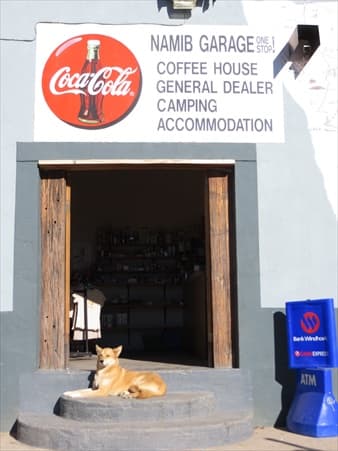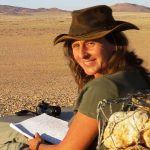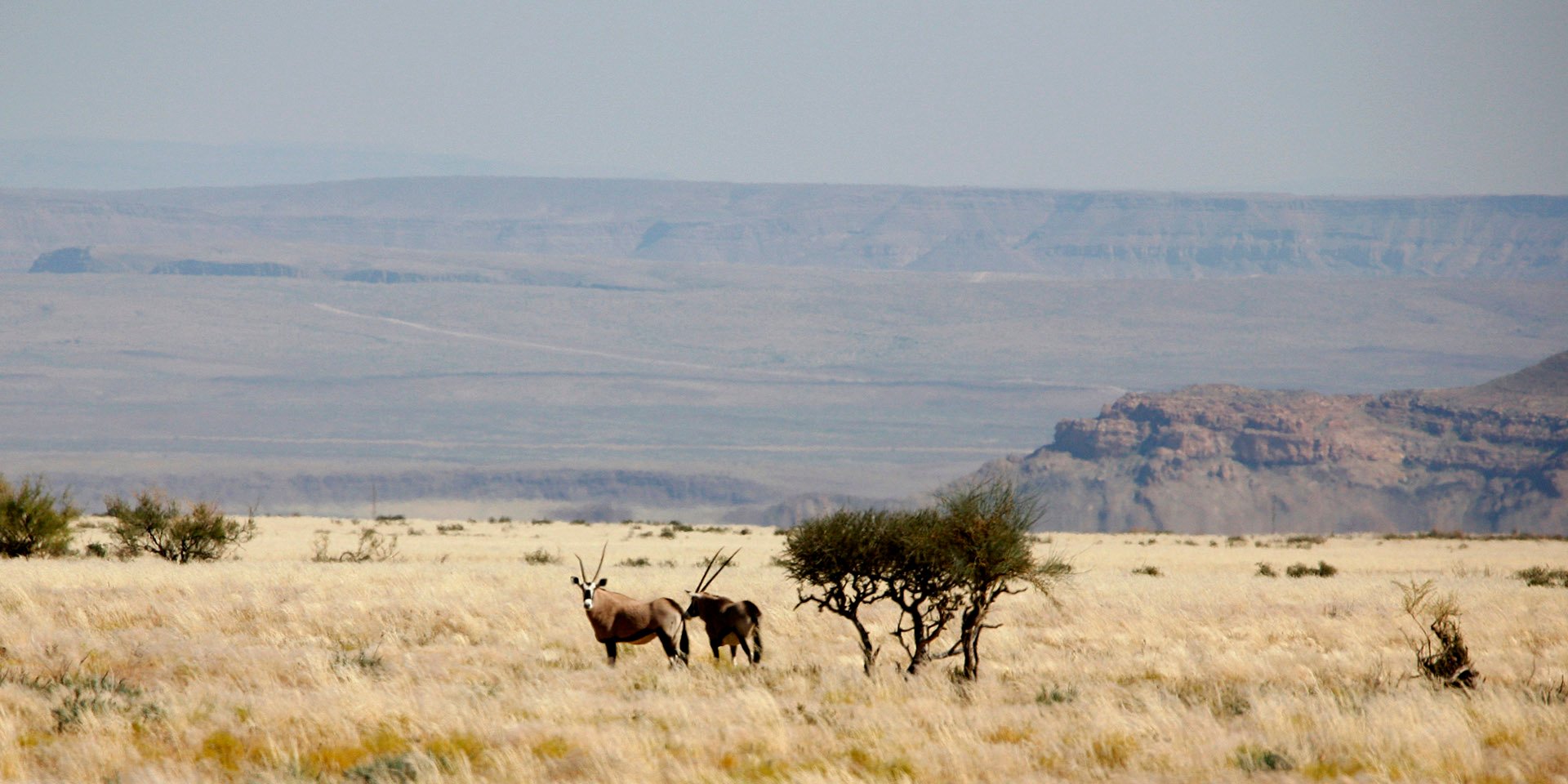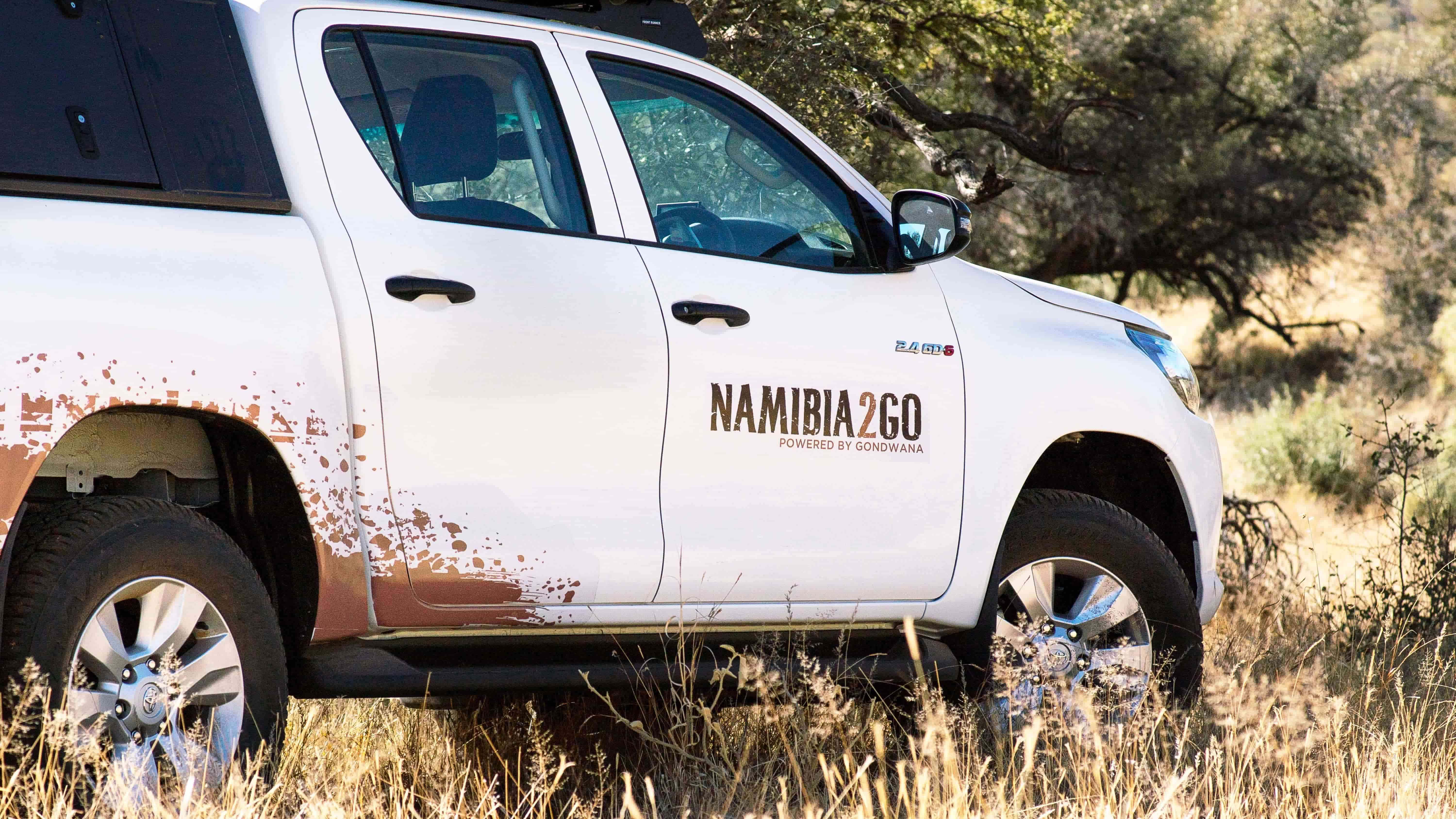Aus is really a one horse town, although you may have difficulty finding the horse. With the building of the Lüderitz-Aus railway in 1906 it became an important station in the area and during the diamond rush of 1908, the town prospered. It went through a seesaw ride (not quite rollercoaster status) until it settled into the quiet little town it is today. It now provides travellers with a good fuel stop and an opportunity for lunch or tea and cake.
When I stopped outside the Namib Garage One-stop shop, a dog lay on the front step absorbing the sunshine like a big ol’ lizard. When I went to pay for my padkos – real health food – chips and coke, I noticed a quote written up on their blackboard: ‘Life isn’t about waiting for the storm to pass, it’s learning to dance in the rain.’ And, although the country is experiencing one of the driest seasons it has had for a while with not a raindrop in sight (and Aus is known for its crazy weather and snow in August), I understood the message. There’s really not enough time to wait or put off anything you need to do now for a future time, is there? NOW is all there is, and instead of waiting, hesitating or postponing, we need to seize, enjoy and make the most of every moment. We need to start dancing. (Thanks for the reminder, Namib One-stop!)
It didn’t take long to drive through the one tarred street of Aus. I did make a trip a few kilometres away, however, to the Commonwealth war graves and the old Prisoner-of-War camp. The small graveyard is interesting for the fact that prisoner and guard, German and Union of South Africa soldier alike, lie side by side. The flu epidemic of 1918 that swept through the country and the world, killing indiscriminately, clearly revealed that in the end we are all equal, regardless of colour, creed or nationality, and whether we consider ourselves victors or losers.
It was getting dark as I walked through the small graveyard, and I felt those old ghosts starting to stir. The Prisoner-of-War camp lies just off the road to Rosh Pinah and was next on my list. It’s a place where a little bit of imagination is needed. It’s also a good idea to view the old sepia-coloured photographs of what the camp looked like in its heyday before your visit. All that remains today is a memorial plaque, a bit of rubble, some rusty metal, the remnants of stone-buildings - and memories. They lie in an empty field amongst bleached grass, backed by a table-topped mountain and serenaded by a cool wind.
Ron Swilling is a freelance writer, based in Cape Town, writing for Namibian and South African publications. She is a regular contributor to Gondwana’s History and Stamps&Stories columns and documented the intriguing information of the Wild Horses in Namibia for Mannfred Goldbeck and Telané Greyling. She invites you to ‘Follow her footsteps’ on her journey from the Orange River, exploring the Gondwana routes through the intriguing country of Namibia.







SUBMIT YOUR COMMENT